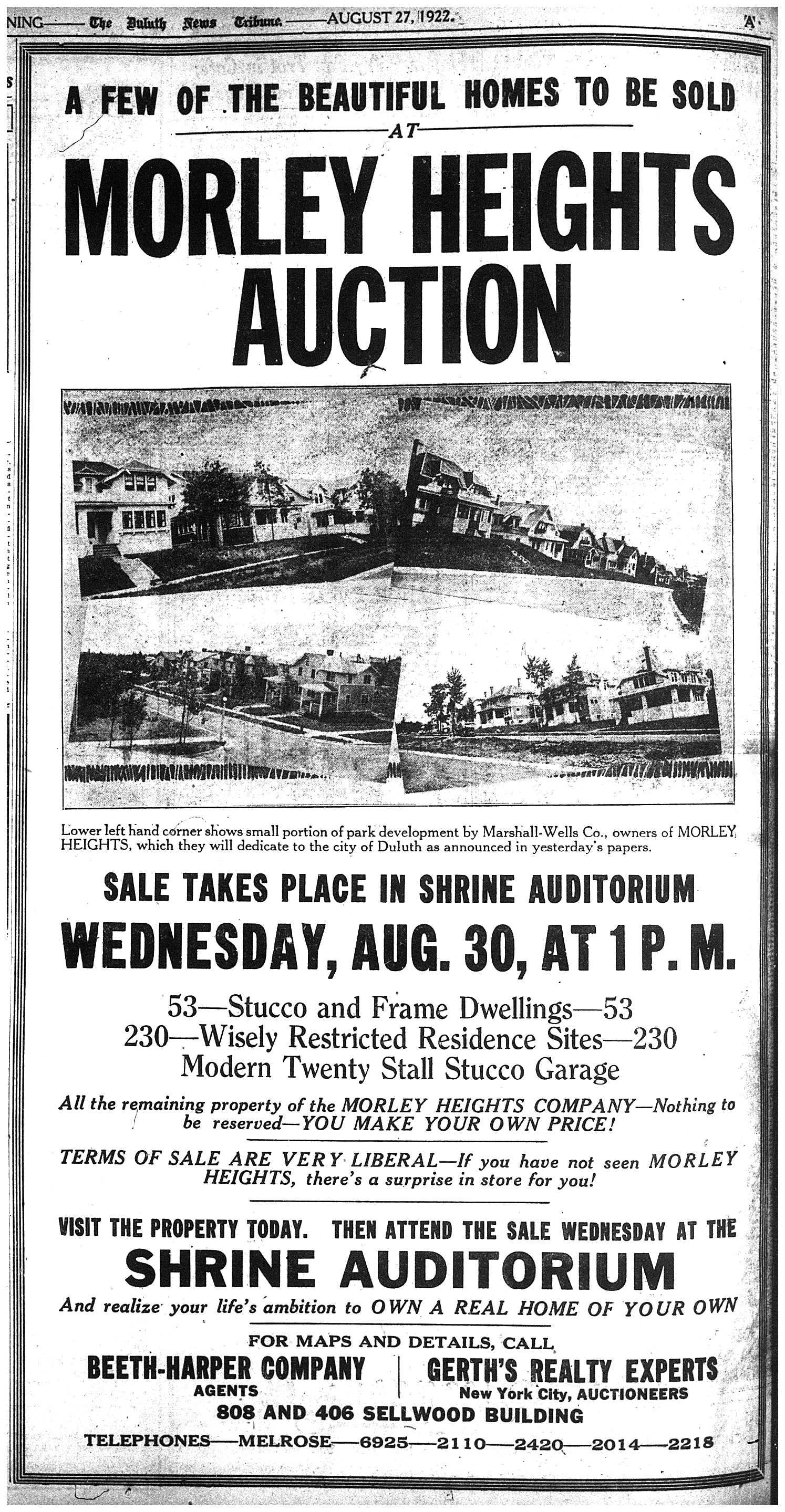
1 minute read
Morley Heights-Parkview
By Adelie Bergstrom abergstrom@duluthnews.comm
If Morgan Park, on Duluth’s western side, was a company town, then Morley Heights, clear across the city, was more of a company neighborhood.
Morley Heights, to the east and up the hill from Woodland Avenue, centers on a quadrantshaped plot of land bounded by Glenwood Street and Leicester and Livingston avenues.
The neighborhood was planned for employees of the Marshall-Wells Hardware Co., based in Duluth and at one time the largest wholesale hardware retailer in the country. The neighborhood was named for its founder, Albert Morley Marshall.
The U.S. government initially cleared the area for a “powder plant” — gunpowder and other munitions — that was finished just as the armistice was signed in November 1918. A few small dwellings for government workers were built, but those workers left when the war ended, according to a 1921 News Tribune story.
In 1919, Marshall-Wells bought the suburban tract and ordered 72 houses from the E.I. du Pont de Nemours Co., commonly known as DuPont.
The “model homes” were shipped from near Washburn, Wis., on freighters across the lake and then hauled up the hillside and rebuilt along Spear Avenue and Morley Parkway, according to the 1974 city publication, “Duluth’s Legacy.” The homes ranged from small bungalows to larger duplexes and were offered to Marshall-Wells employees on an installment plan. A neighborhood park was founded, complete with a community building and garage.
In the end, the effort wasn’t successful. Employees didn’t buy the houses as hoped, and Marshall-Wells put 53 unsold homes up for auction in August 1922, netting $250,000 — twothirds of their appraised value, the News Tribune reported.
Officially, today’s Morley Heights-Parkview neighborhood includes a swath of land roughly between Vermilion Road on the west, Jean Duluth Road and Amity Creek on the east, Martin Road on the north and Snively Road on the south. The “Parkview” designation, added well after Morley Heights’ founding, refers to the more rural parts of the neighborhood north of Glenwood Street.
The homes Marshall-Wells built there 100 years ago remain,
Marshall-Wells employees didn’t buy houses in Morley Heights as hoped, so the company put up 53 unsold homes for auction in August 1922, netting $250,000 — two-thirds of their appraised value. (1922 file / News Tribune) as does Morley Heights Park, intended as the neighborhood’s centerpiece, though its community center has been lost to history. A historical marker in the park tells visitors of the neighborhood’s roots.











